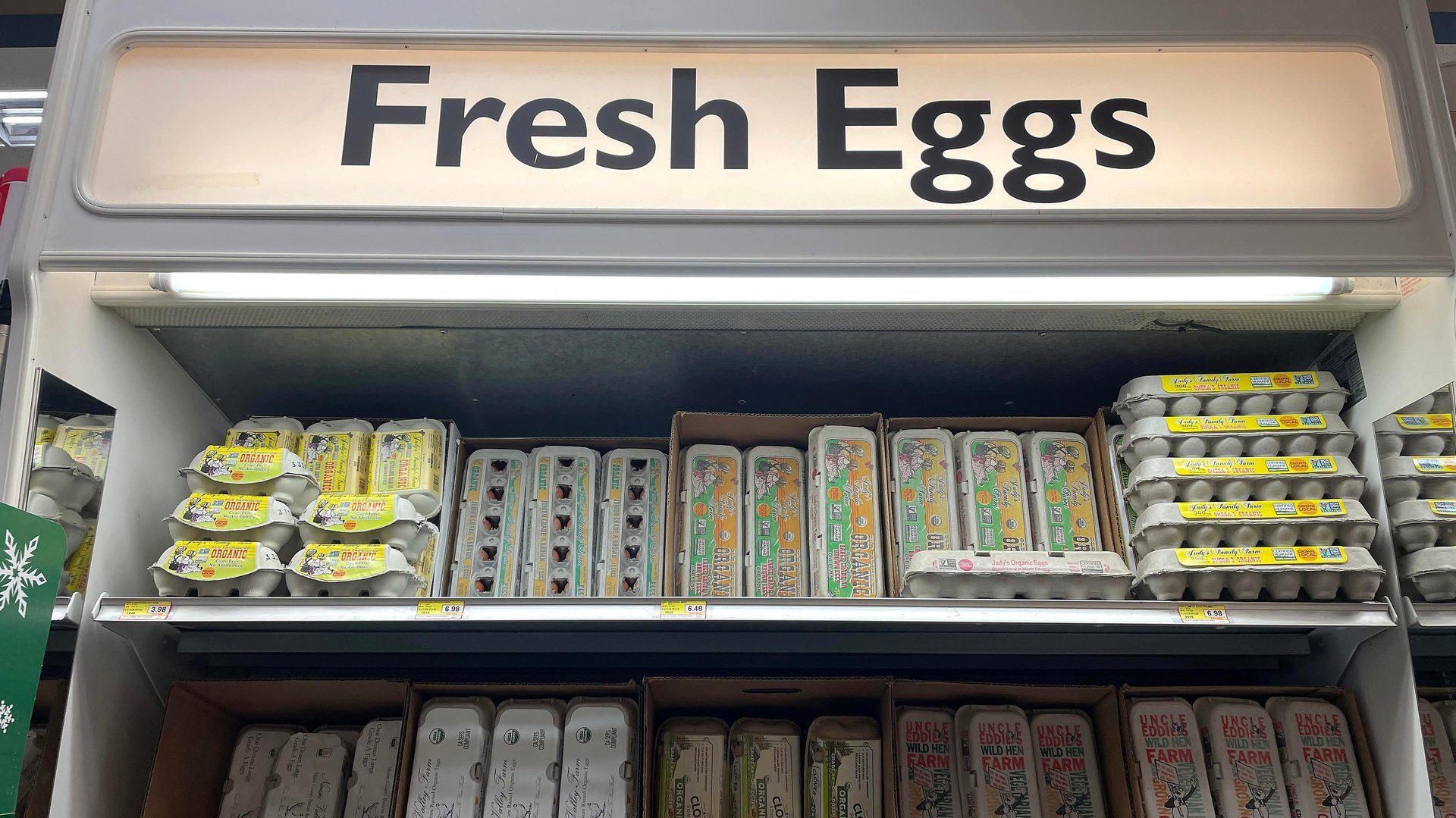These are the items driving up US grocery bills the most
Food products like eggs and steaks are getting more expensive, according to new inflation data

Eating at home is still a better option than dining out for Americans who want to save money. Even as inflation ticked up more than expected in December, the cost of eating at home (a.k.a. buying groceries and making your own meals) rose only modestly, up 0.1%, compared to the jump in the cost of eating out, up 0.3%.
Suggested Reading
But the modest change in average food prices masks what are sometimes big differences between products. Quartz analyzed the US Bureau of Labor Statistics (BLS) data released Thursday (Jan. 11) and compiled a list of yays and nays for Americans’ grocery lists.
Related Content
Nays and okays: these grocery items got pricier
Nays
🥚 Eggs, +8.9%: Prices for the breakfast staple jumped in December 2023 from the prior month, but they’re still a staggering 24% lower than they were in December 2022. The cost of eggs surged in 2022 to record highs due to an outbreak of a fatal bird flu strain known as H5N1. The deadly virus is plaguing poultry producers once again. Around 11 million birds were affected by the flu in December, up from 8 million in November and just 1 million in October. At egg farms in northern California, producers were forced to euthanize several million chickens in a matter of weeks. Now, consumers are paying the cost.
🥩 Steak, +1.4%: Costs of uncooked beef steaks climbed 1.4% (and even higher, 2.4% on a seasonally-adjusted basis) in December and are up more than 11% from the a year ago. Beef prices surged in 2023 due to a drought in cattle ranching states such as Texas that squeezed the supply of cattle. The continued rise in the cost of steaks comes even as other beef products (ground beef and beef roasts) see prices start to edge down.
Okays
🥜 Peanut butter, +2.6%: Lovers of the American classic sandwich, PB&J, may want to go with just the jelly. Peanut butter prices rose from November to December, and they’re up 3% from the previous year. It’s worth noting that, despite its price hikes, peanut butter is still cheap compared to other items, and it’s nutritionally dense.
🫘 Dried beans, peas, and lentils, +2.2%: If you were looking for black-eyed peas to cook for New Year’s and found they were more expensive, you’re not alone. But dried beans are actually less expensive than they were last year (down 1.5%), and their prices haven’t been as affected by inflation as other products. The fact that costs of the goods are picking back up shouldn’t be too much of a concern for grocery shoppers.
🥫 Canned fruits and vegetables +1.7%: Even as fresh fruit and vegetable prices fell, the cost of their less-fresh, canned cousins jumped up. Canned fruit and vegetable prices were also 2.4% higher than the previous year. These goods are still low-cost compared to others.
Yays: these products got cheaper
🍊 Citrus fruits, -4%: The 5.4% decline in the cost of oranges helped drive down prices of citrus fruits for consumers.
🥬 Lettuce, -3.5%: Salad fanatics, rejoice! Lettuce prices sank in December. They were down nearly 17% from the prior year.
🍖 Ham, -2.4%: Switch your steaks for a nice ham sandwich, for now, if you want to save money. Ham prices dropped over 2%, though they’re still 2.5% higher than they were in December of 2022.
🥣 Breakfast cereal, -2.4%: If you’re a cereal household, time to stock up on Cheerios. The cost of cereal fell in the last month of 2023, but remained about the same (+0.3%) from the year-ago period.